Technology
Threads vs. Twitter, what’s the difference?
Published
2 years agoon
By
Kai Kelis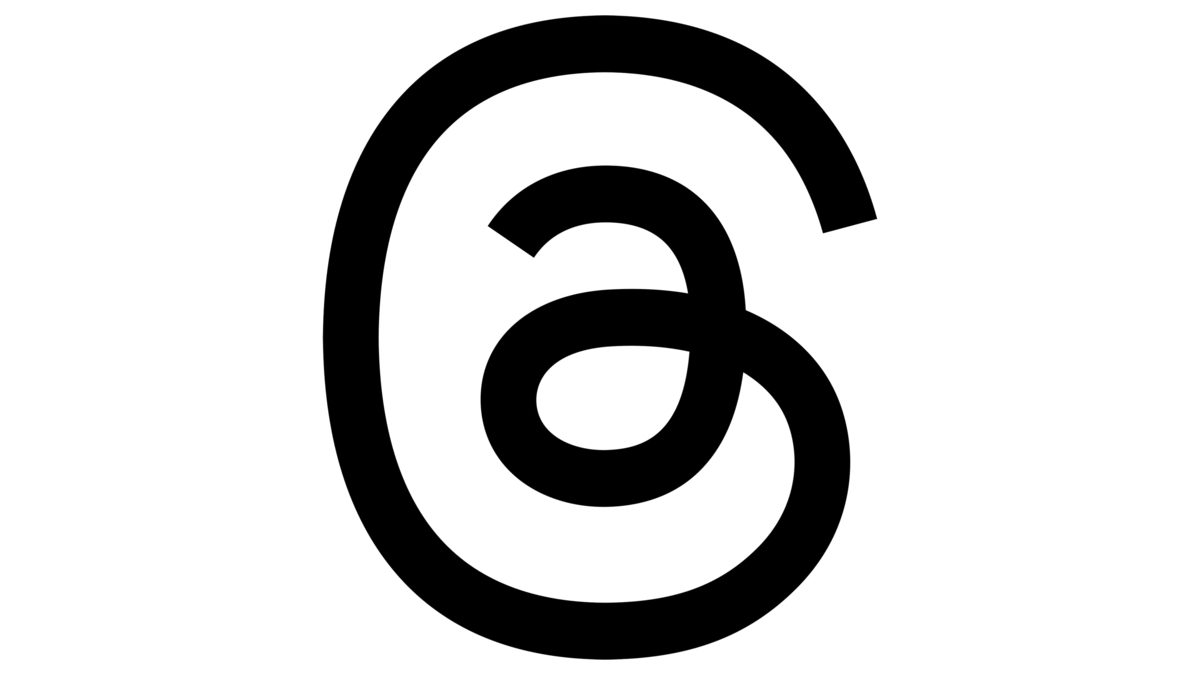
Threads isn’t just a buzzword making waves online these days. Meta Platforms has created this Instagram subsidy that works like Twitter; unsurprisingly, people love it! The app garnered over 100 million signups within five days after launching last July 2023. On the flip side, Twitter reached over 100 million users six years after launching in 2006. To date, Twitter now has over 330 million active users.
Meanwhile, Threads is slowly gaining popularity and accolades from netizens over Twitter. But what are the differences between Threads and Twitter? Find out in this Threads vs. Twitter comparison guide.
Threads vs. Twitter differences
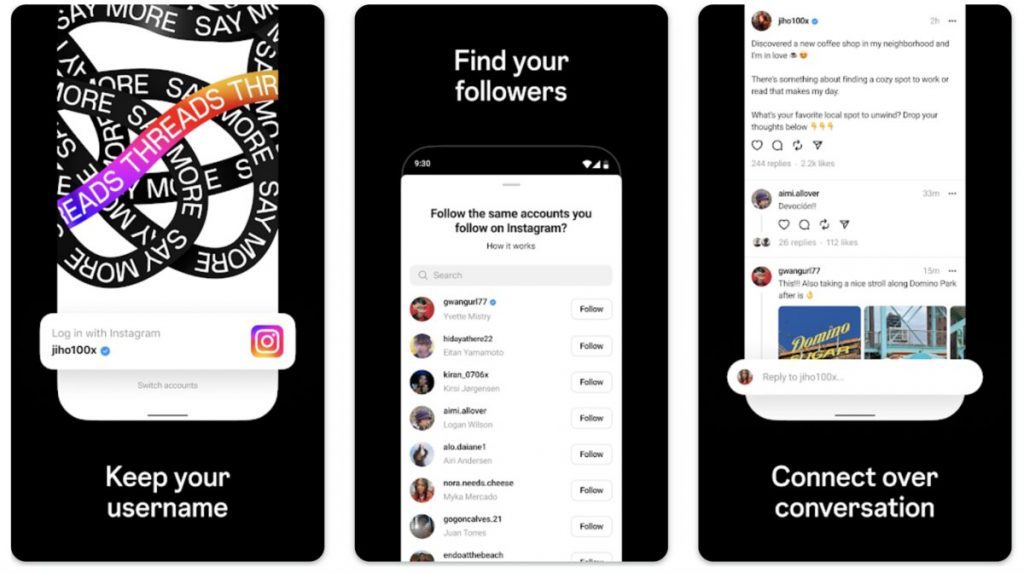
While both social media networks work similarly, a few nuances divide users. Twitter and Threads let users post brief text status updates that may or may not include links, videos, or images. Both platforms also allow users to interact with others and engage in posts. The only significant difference between Threads and Twitter is the privacy controls. On top of that, here are some Threads vs Twitter differences:
Privacy controls
The most apparent difference between Threads and Twitter is the privacy controls. Twitter posts are for the public, meaning people who follow you will see your tweets. People who also don’t follow you on Twitter may see your posts.
On the other hand, Threads is focused more on privacy. Although it’s a social media app, Threads strongly emphasizes privacy. Threads are shared with a close group of friends only, and users can customize who can engage with their posts.
Character length
Another Threads vs. Twitter difference is the character length for text posts. Twitter limits tweets to up to 280 characters. Meanwhile, Threads lets users posts text statuses of up to 500 characters.
Structure
The structure also differentiates both social media networks. While both social sharing platforms let users post text content, Twitter’s post structure is more concisesuccinct. That said, followers will find tweets more easily digestible because they’re shorter.
Conversely, Threads allows up to 500 characters. However, one unique feature of this app is it automatically creates a new thread if your post goes beyond 500 characters. This means following posts on Threads is easier as users can fully grasp the narrative since posts are interconnected. Threads offers a more immersive engagement experience for followers.
Followers
You can see tweets from others you don’t follow on Twitter. You can still view and engage with their posts even if there is no common connection between you and the tweet starter.
Meanwhile, Threads emphasizes close friends lists. You can share current activities, updates, videos, and images with a smaller list of friends. Threads allows for more intimate engagement and interaction with followers, while Twitter is built for more public sharing.
Direct messaging
Finding someone on Twitter and sending them a direct message is easy. Twitter has a direct message option where you can click one button and send a private message directly. However, Threads currently doesn’t have a direct message feature. But you can message someone with a Threads account via Instagram.
Since Threads requires an Instagram account before signing up, you can find them on IG and message them. Anyone who signs up for Threads must carry the same Instagram handle. Once you’re on the Threads app, you will find the Instagram camera icon at the top of the app’s interface. Click that, and it will direct you to the Threads user’s Instagram profile.
Audience
Twitter lets you interact with anyone with a Twitter profile. Twitter users can follow brands, celebrities, organizations, or individuals they’re interested in. Once you download the Threads app, you’ll be asked to follow the same Instagram followers. However, you can customize this by doing it manually. You can tap on the Instagram user’s profile and hit “Follow.”
Engagement
Every tweet on Twitter can be liked, replied to, or retweeted. Like Twitter, Threads lets users engage with threads by replying to threads or resharing. The only difference is Threads allows users and followers to engage with an entire thread instead of one tweet.
Posts/topics
As for the topics you can post on both platforms, users have full control over what content they want to share. Before Elon Musk rebranded Twitter to X, the platform was a social media network for announcements, product launching, news updates, link sharing, and personal opinions.
Conversely, Threads is used more for personal stories, activities, in-depth topics, tutorials, etc. Threads is more for personal updates than anything else.
Discoverability
Tweets can go viral quickly and are searchable within the platform. Through keywords, many users who don’t follow a particular Twitter user can see their posts when their inquiries match the content. That said, Twitter posts can go viral easily and quickly.
Meanwhile, Threads posts may spread slower than Twitter posts. Because Threads focuses more on private and more intimate sharing, threads don’t gain visibility and traction faster than tweets.
Accessibility
Another Threads vs. Twitter difference that might turn users away from the newest social media app is accessibility. Twitter is an independent app that can be accessed on mobile phones and desktops.
Its counterpart can only be accessed via mobile since it lacks full-fledged web support. It’s also an Instagram subsidiary, meaning everything is linked to your Instagram account.
Which platform is right for you?

Choosing the most suitable platform for sharing content depends on your preference. If you want a more intimate expression of thoughts and ideas, Threads is your social media app. However, if you want a social media channel that leans more towards recent events, tech, news topics, and business, Twitter, now known as X, is a better platform.
You may like
Technology
10 Audience Research Tools to Help You Understand Your Market
Published
1 day agoon
August 1, 2025By
Skylar Lee
Marketing tools get the job done when reaching audiences, driving them to your site, and purchasing your product or services. However, many businesses take their marketing strategies to the next level with audience research. The insights offered by audience research tools are valuable. And it helps marketers create personalized campaigns to entice audiences to their products or services. But which tools should you use? We list the ten best ones!
Audience Research vs. Market Research: What’s the Difference?
The terms audience research and market research are interchangeable. However, there’s a stark difference between the two. Market research covers discussions or insights on market trends and various audiences. Meanwhile, audience research focuses on a specific demographic.
1. SparkToro

One of the leaders in audience research is SparkToro. You can rely on SparkToro to give pertinent information about your audiences, such as job titles, education, preferences, hashtags, and language. And they crawl over 80 million pages to get the information you need to understand your audience.
In 2025, SparkToro introduced natural-language search enhancements and audience-building workflows, making it easier than ever to extract insights for content creation, influencer outreach, PR, SEO, and digital ads.
Features:
- No surveys or cookies required; data pulled from 80M+ public profiles
- “My Audience” queries using job titles, interests, hashtags, and platforms
- Contact info of potential leads, brand advocates, or influencers
- Tracking changes in audience behavior over time
Pricing:
- Free
- Basic – $38/mo
- Standard – $112/mo
- Agency – $225/mo
2. Ask Your Target Market

If you want another audience intelligence tool, Ask Your Target Market is one option to consider. They have an all-encompassing tool to understand your market, improve your brand and product, and craft better marketing campaigns.
What sets AYTM apart is its automated survey builder and a highly refined panel of verified respondents, allowing you to reach niche or broad audiences in minutes, with AI-supported tools for data visualization and insights.
Features:
- Access to millions of U.S. and global respondents
- Real-time data with advanced analytics dashboards
- Drag-and-drop survey builder with logic flows
- Integrations with Slack, Excel, and data visualization tools
Pricing:
- Lite- Free
- Plus – $150 per month
- Max – Custom
3. Audiense
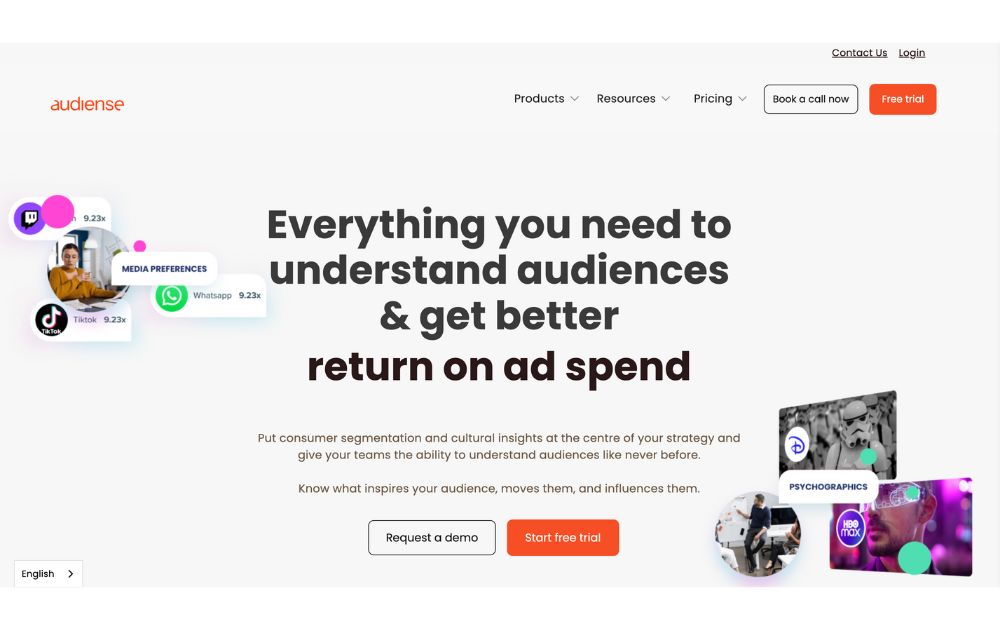
Get ahead of competitors with the help of Audiense. The UK-based audience research tool has two solutions to help brands optimize their marketing strategies: Audiense Insights and Audiense Connect. This tool is ideal for businesses learning more about their Twitter audience. But Audiense Insights provides a comprehensive overview of your audience.
In 2025, Audiense launched MCP Connectors, a major update that brings AI audience intelligence into your MarTech stack by integrating with platforms like Salesforce, HubSpot, and Microsoft Dynamics.
Features:
- Personality traits, interests, buying mindset, and content preferences
- Affinity mapping to media, brands, influencers, and hashtags
- Competitive benchmarking and brand health analysis
- Exportable insights for paid media and CRM strategies
Pricing (X Marketing):
- Free
- Pro ($250/year)
- API Access – available upon request
4. SurveyMonkey
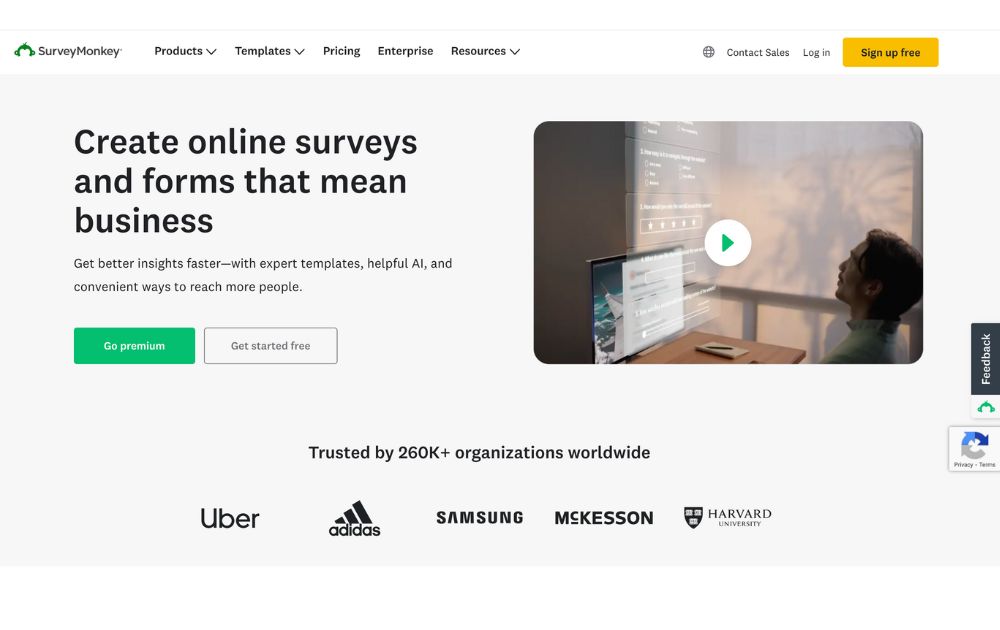
You can conduct audience research yourself by using a survey tool like SurveyMonkey. Using SurveyMonkey as an audience research tool is ideal if you have a huge customer base.
SurveyMonkey now offers AI-assisted survey creation, WhatsApp distribution, and automated data summaries, making it easier than ever to understand your audience, test messaging, or validate new ideas.
Features:
- AI-generated questions and survey logic
- Branded surveys with skip logic and advanced analytics
- Share surveys via email, social media, or WhatsApp
- Integration with tools like Salesforce, HubSpot, and Slack
Pricing (Team Plans):
- Team Advantage – $25/user/mo
- Team Premier – $75/user/mo
- Enterprise – Custom
5. Typeform
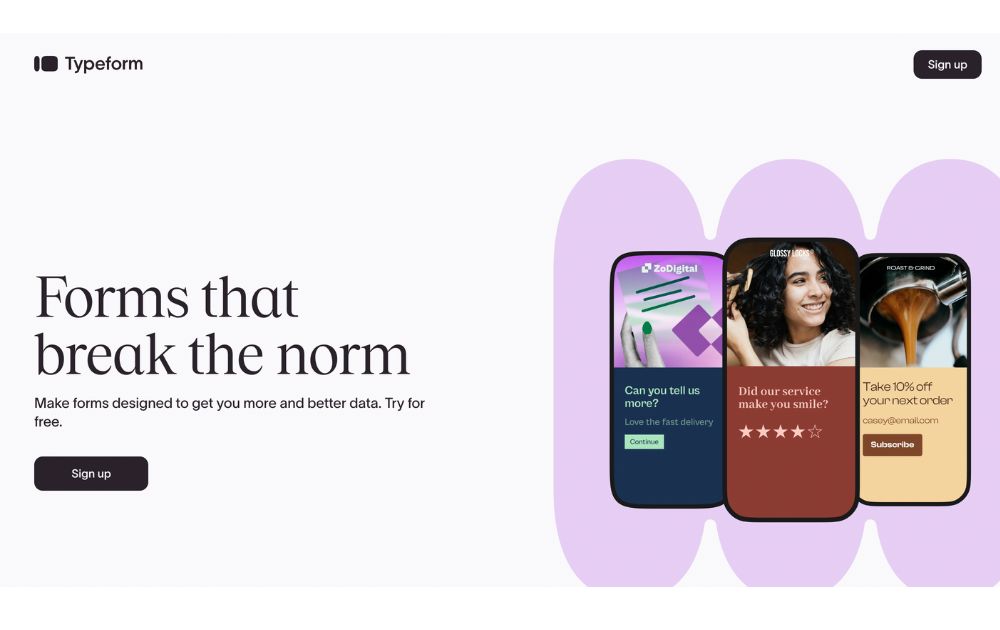
An alternative survey tool to SurveyMonkey is Typeform. With Typeform, you can get a pulse of your audience’s behaviors and preferences through quantitative and qualitative data gathering. Like SurveyMonkey, you can customize your survey with branding colors or templates.
With its latest updates, Typeform now offers AI-enhanced form logic, deeper analytics integrations, and more customization options. Marketers, researchers, and UX designers alike use it to capture qualitative and quantitative data in a format people actually enjoy answering.
Features:
- Drag-and-drop builder with branded templates
- Advanced conditional logic and scoring
- Integration with Google Sheets, HubSpot, Slack, Notion, and more
- AI-powered suggestions for questions and survey flows
Pricing:
- Basic – $29/mo
- Plus – $59/mo
- Business – $99/mo
- Enterprise – Contact sales
6. BrandMentions
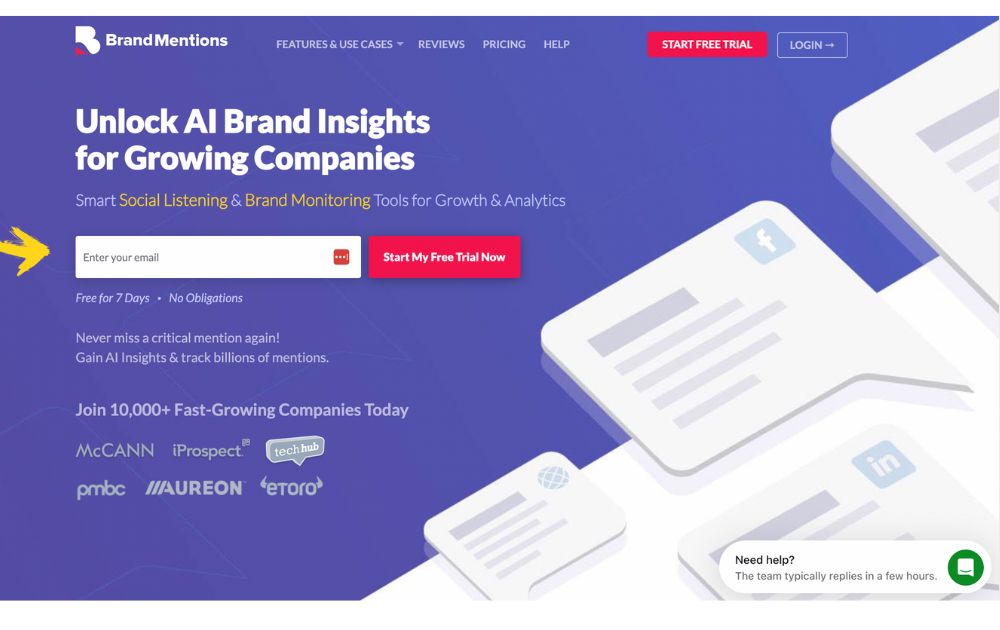
Social listening is another form of audience research. BrandMentions is one platform for that purpose. You can get ahead of competitors on the platform with the Business Intelligence solution. You can use amazing tools, such as:
- Hashtag and brand trackers
- Social mentions
- Social media trackers
Features:
- Real-time alerts for brand, product, or keyword mentions
- Sentiment analysis and engagement tracking
- Influencer identification based on reach and relevance
- White-label reporting and team collaboration tools
Pricing:
- Growing Business – $99/mo
- Company – $299/mo
- Enterprise/Agency – $499/mo
7. AnswerThePublic
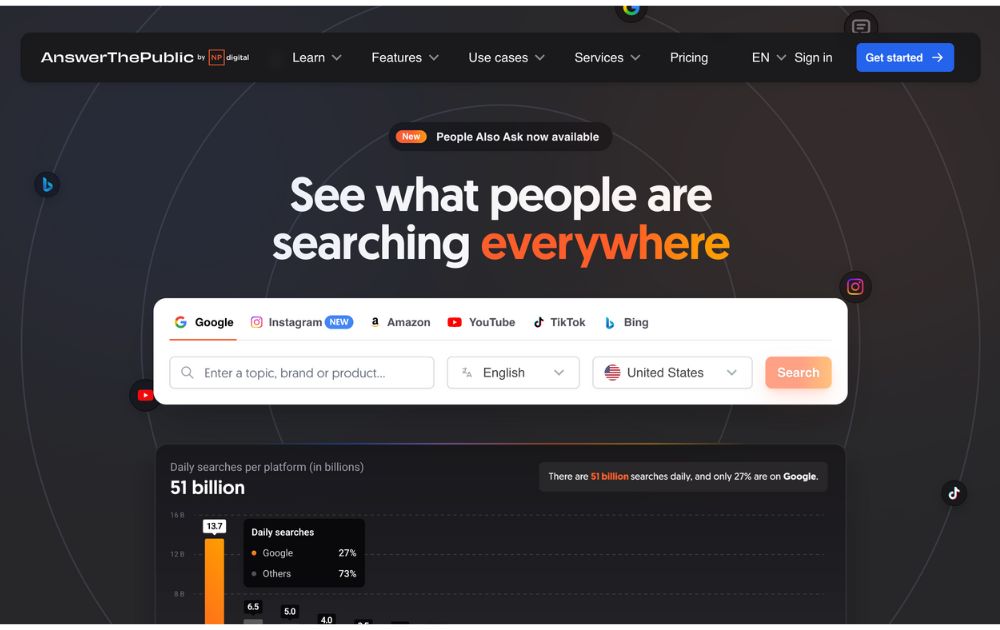
SEO platforms or tools can give you insight into your audience too. AnswerThePublic is one of the most popular audience research tools to understand your consumers. With AnswerThePublic, you can search for your keyword and get insights about your customers’ searches.
It’s especially helpful for discovering questions, comparisons, and long-tail keywords your audience is curious about, grouped into visual keyword clouds and organized categories.
Features:
- Keyword insights segmented by question type (what, why, how, etc.)
- Data visualizations and downloadable reports
- Folder system for organizing and tracking ideas
- Unlimited daily searches for Pro users
Pricing:
- Individual – $5/month (100 searches per day)
- Pro – $49/month (unlimited searches)
- Expert – $99/month (unlimited searches)
8. Statista
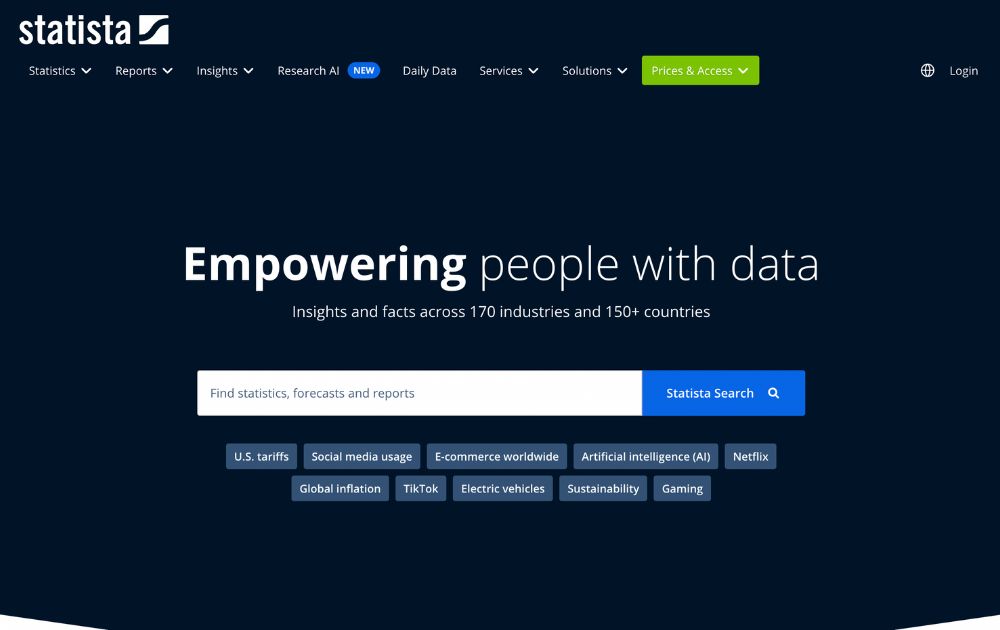
One underutilized audience research tool is statistics. And there’s no better source for updated statistics than Statista. The market and consumer data website offer insights into any industry or demographic. You can find trends and consumer behavior patterns.
Used by marketers, researchers, and business leaders alike, Statista aggregates information from over 22,500 sources across 170+ industries — all searchable by region, topic, or sector.
Features:
- Charts, infographics, and exportable datasets
- Access to industry reports, consumer insights, and forecasts
- AskStatista feature for custom data requests
- eCommerceDB for online retail behavior and segmentation
Pricing (Single Accounts):
- Basic – Free
- Starter – $149/mo/billed annually
Personal – $599/mo/billed annually - Professional – $1,299/mo/billed annually
9. SimilarWeb

SimilarWeb is a comprehensive platform guaranteed to optimize your marketing and sales campaigns. One of its main features is the market intelligence tool, giving you an idea of your market and audience.
With their Audience Analysis tool, you can build and segment audiences. Plus, get more insights through behavior and trends. In addition, they promise to help you get ahead of competitors with these other components.
Features:
- Audience segmentation based on interest, behavior, and device
- Web traffic overview including bounce rate, engagement, and channel mix
- Market intelligence and benchmarking tools
- App intelligence for mobile behavior insights
Pricing:
- Starter – $1,500/ year or $199/ month
- Professional – $4,000/ year or $399/ month
- Team – Custom
- Enterprise – Custom
10. Buzzsumo
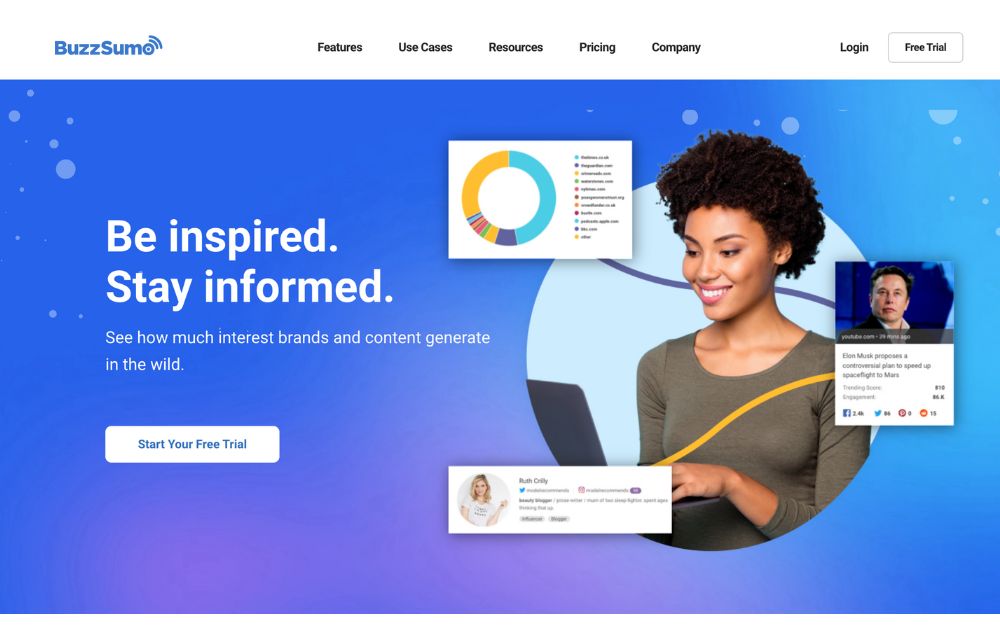
Although Buzzsumo is a content marketing tool, you can still learn more about your audience on their platform. You’ll know more about trends and updates in their Monitoring solution. Plus, you can monitor who mentions your brand. This allows you to understand who’s interested in your business. And those who you can stillreach.
It’s especially useful for planning content strategies, tracking brand mentions, and identifying audience interests based on real-time performance data.
Features:
- Keyword tracking and alerts
- Content performance metrics across platforms
- Influencer discovery and outreach tools
- Custom dashboards and exportable reports
Pricing:
- Content Creation – $199 /mo
- PR and Comms – $299 /mo
- Suite – $499 /mo
- Enterprise – $999 /mo
Final Thoughts
Many audience research tools have hefty price tags. But it’s worth investing in considering the information you can obtain about your audiences. However, if those are too pricey for your taste, there are budget-friendly solutions that could help you better understand your audiences.
Technology
10 Affiliate Tracking Software Tools to Grow Your Online Income
Published
1 day agoon
August 1, 2025By
Carmen DayAffiliate tracking software is an essential tool for anyone who is looking to build an online income stream. It enables you to:
- Track sales and commissions
- Calculate payouts
- Manage your affiliate program
With so many available options, finding the best affiliate tracking software for your needs can be overwhelming. To help you make the right decision, we’ve compiled a list of the top ten best affiliate tracking software in 2025. Each of these programs is feature-rich, intuitive, and reliable, so you can be sure you’re getting the most out of your affiliate program. Check out this list and take your pick.
1. CrewFire

CrewFire is an affiliate software for small business firms and big companies alike. Since the app allows brand ambassadors to get rewarded for every transaction they make, using this software could motivate your content creator partners. In addition to that, this app also lets users track conversions to know who are the best ones bringing in traffic and making sales.
Features:
- Referral tracking
- Reward and incentives system
- Gamification
Pricing:
CrewFire has been acquired by BrandChamp. They don’t publish their rates online but you can chat with their sales team to ask about their plans.
2. Refersion
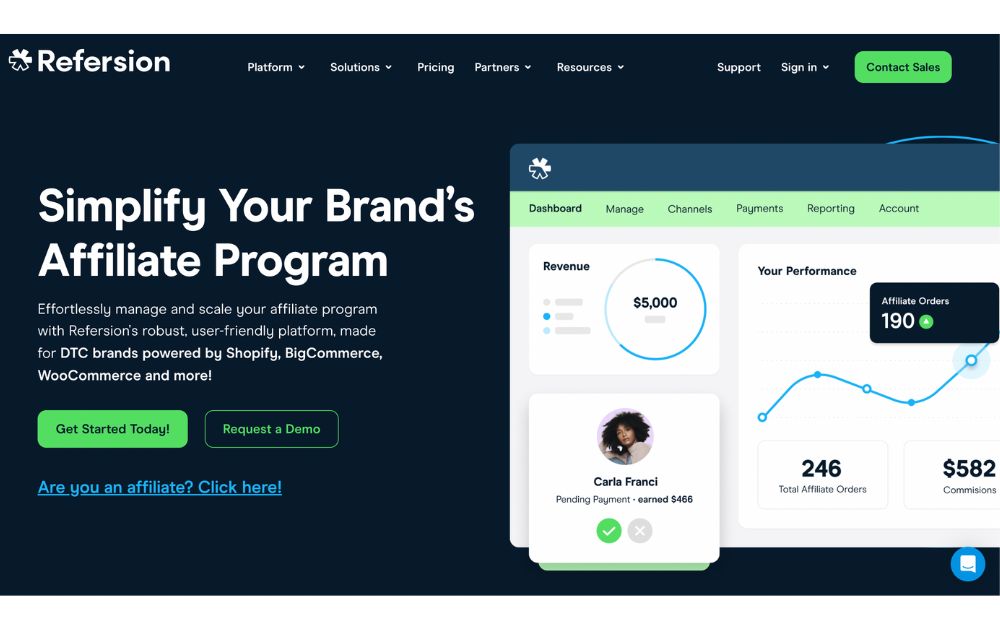
Next on our list of affiliate tracking software options is Refersion. This app allows for promo campaign management and allows the user to set customized commission amounts based on certain products.
Features:
- Campaigns and management
- Automated payments
- Integration with ecommerce platforms
Pricing:
The cheapest plan, Launch, is $39 per month plus 3% of affiliate-generated sales per month.
3. We Can Track

If you’re looking for a top affiliate tracking software that offers a free trial, check out We Can Track. What makes this app unique is the actionable insights it provides by integrating various data into one material.
Features:
- Integration with Google Ads, Google Analytics, and Facebook Ads
- Ad network integrations
- Advertiser, content, and network performance tracking
Pricing:
The cheapest plan is around $65 per month for 20 network accounts and 500 transactions.
4. Impact

Impact is an affiliate marketing app that describes itself as “one platform to manage a complex universe of partnerships.”
Features:
- Customer interaction tracking and analysis across every device
- Discovering and recruiting global partners
- On-brand assets creation for engaging customer experience
Pricing:
Impact’s rates aren’t available on their website, but you can contact them to get their pricing details.
5. Peerclick
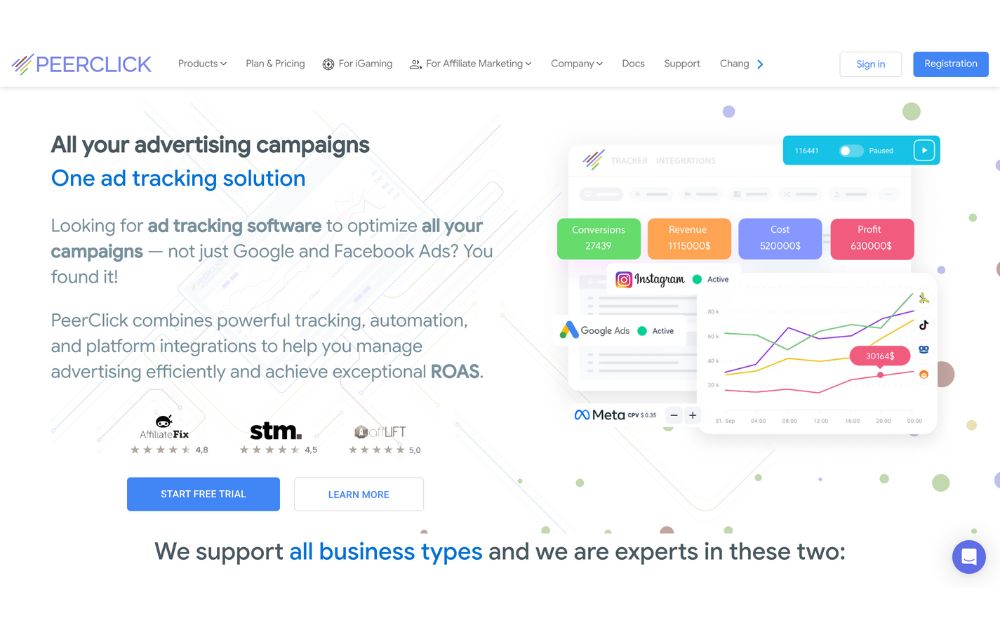
Peerclick is an affiliate tracking software open source version that allows users to track their campaigns. In addition to that, this app aggregates data in one place, offering summarized info for sound decision-making.
Features:
- Multiple third-party offer tracking
- Custom conversion tracking
- Over 30 data points on every visit
Pricing:
The cheapest package is $79 per month, billed annually.
6. Tune
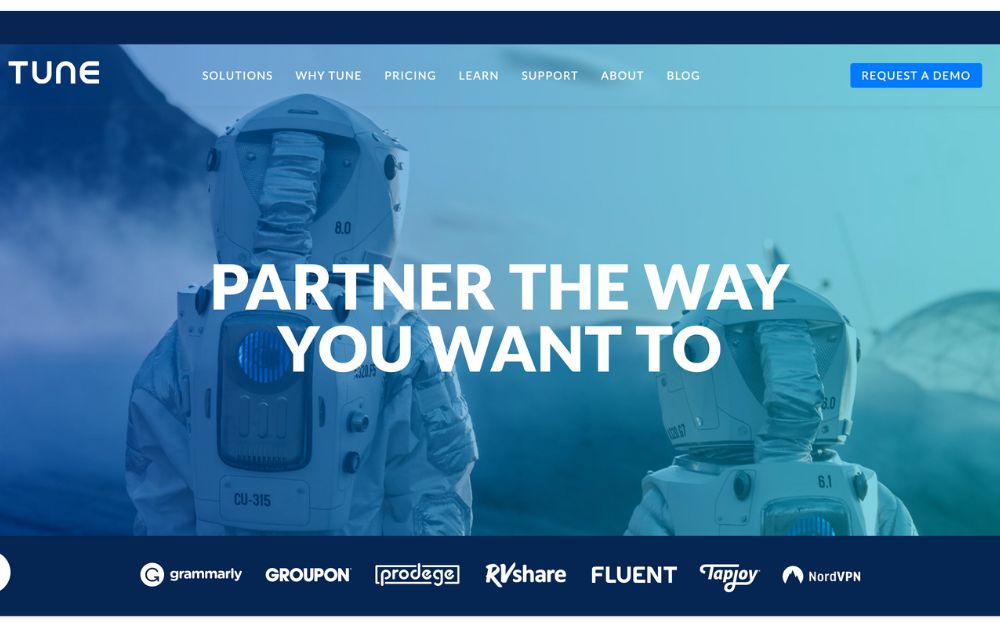
Tune offers affiliate marketing software built for individuals or firms who want to establish their affiliate network.
Features:
- Complete partner management and proactive fraud prevention for advertisers
- Advanced automation and real-time data streaming for networks
- Robust suite of optimization and reporting features
Pricing:
For Networks, their published rate is $899 per month, paid annually. For Advertisers, on the other hand, their published rate is $1,500 per month paid annually.
7. UpPromote
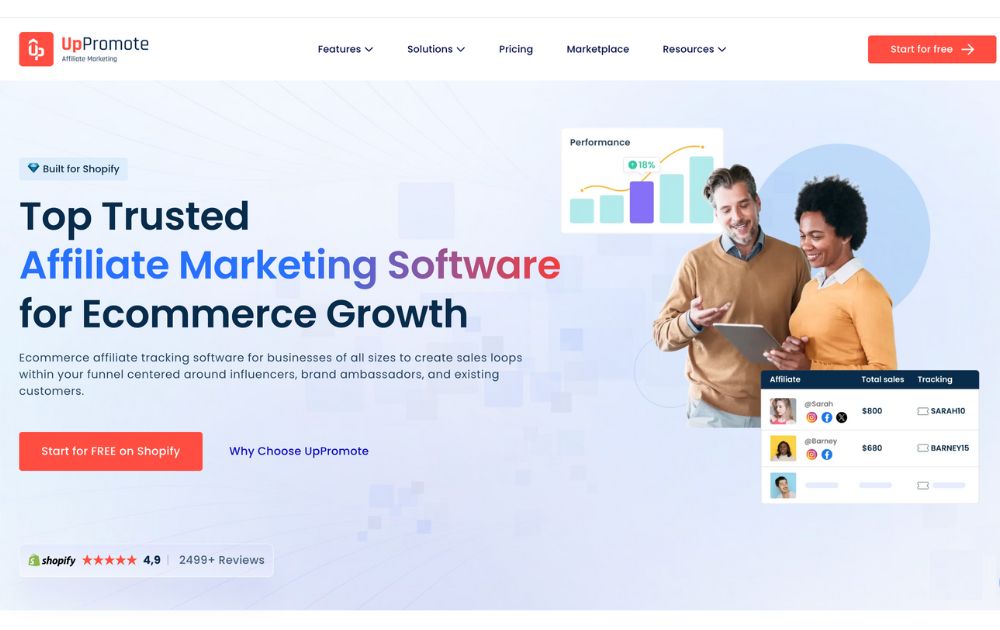
If you’re looking for free affiliate tracking software, check out UpPromote. The free plan offers basic features, but you’ll need to upgrade to paid packages to get upgraded features like access to an affiliate marketplace and running multiple programs.
Features:
- Program setup, including commissions set by program or products
- Affiliate recruitment through multi-level marketing, referral, or marketplace listing
- Tracking and analytics
Pricing:
The platform offers a free plan for one campaign, and its paid tiers start at $29.99 per month + 2% successful referral sales.
8. Trackdesk

Next on our list of affiliate marketing platforms is Trackdesk. This app features superb UI/UX, making it a favorite software for SaaS, eCommerce, and Startups.
Features:
- Reliable tracking with 99.99% uptime guarantee
- Bulk auto affiliate payouts
- Real-time insights and customizable reports
Pricing:
The platform offers a free plan for five coupons and 50 affiliates. Its paid tiers start at $67 per month for unlimited affiliates.
9. Everflow
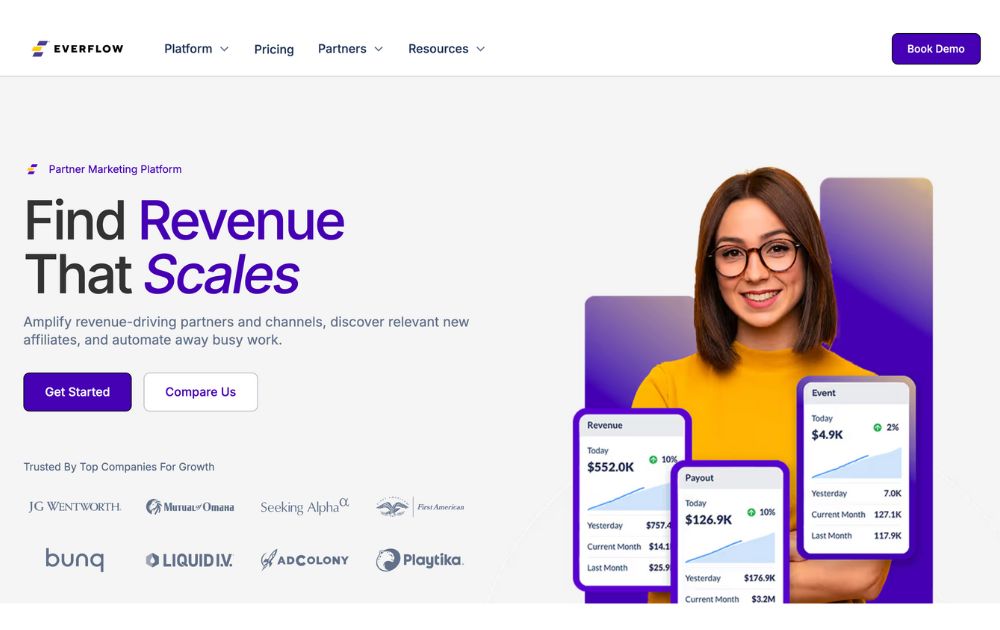
Though Everflow is not a free affiliate marketing software, it allows users to manage its partnerships and track progress all in one platform. The app’s features make the investment worth it.
Features:
- One-stop shop to track partnerships, affiliates, and marketing
- Channel engagement and revenue analysis
- Tech stack integration to simplify tasks
Pricing:
The platform’s rates aren’t instantly available, but you can request a quote through their website.
10. Tradedoubler
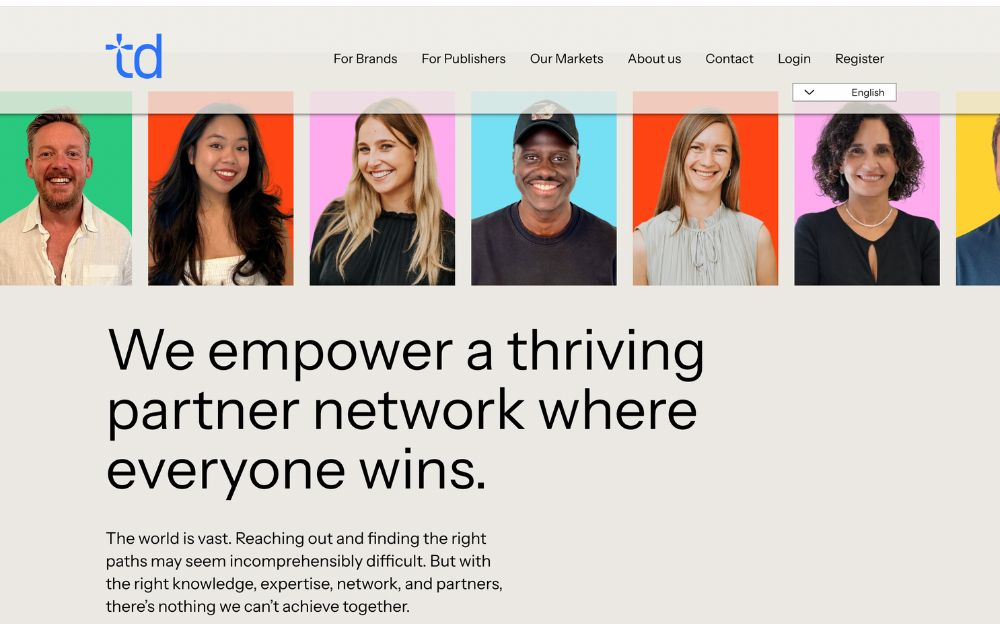
Last but not least on our affiliate software list is Tradedoubler. This app empowers advertisers and publishers alike to grow their business with tailored performance solutions based on specific needs.
Features:
- Reliable, stable, and modern tracking and tech
- Modern and user-friendly interfaces and APIs
- SaaS product (Grow) for startups and SMEs
Pricing:
Tradedoubler’s rates aren’t available on their website. You’ll need to get in touch with them to get their pricing.
FAQs about Affiliate Tracking Software
How do I keep track of my affiliate programs?
You can keep track of your affiliate program by using software that will monitor the conversions made by affiliates’ audiences. These apps help content creators monetize and allow marketers to track conversions and commission pay-outs.
What is an affiliate tracking ID?
An affiliate tracking ID is a URL containing the username or ID of the partner. Brands use this to track affiliate performance as well as the traffic that the affiliate partner sends to the brand’s site through the program.
How do you track the success of affiliate marketing?
There are various factors to consider to gauge the success of an affiliate program. These factors may include the number of clicks, conversion rate, return on ad spend, cost per sale, and more.
How to Pick the Best Affiliate Tracking Software
Dealing with a hundred affiliates would be quite tricky, if not impossible. That said, software made for that purpose will save you time and energy. Most of all, an app will help prevent mistakes such as paying the wrong partner or sending out the wrong amount.
So, how do you pick the right software? The best affiliate tracking software for you will depend on your individual needs and objectives. For example, if you’re running a large-scale, multi-channel affiliate program, you’ll need a program that can handle the extra volume. You’ll also want to consider the following:
- Type of program. There are two main types of affiliate tracking software: hosted and non-hosted. Hosted software is cloud-based, which means you don’t need to install it on your computer. It’s also crucial to note that non-hosted software requires installation and maintenance.
- Ease of use. Affiliate tracking software is not one-size-fits-all. Choose a program that is easy to use, so you don’t get overwhelmed.
- Security. Make sure your affiliate tracking software is secure. Hackers can get access to your program and steal all of your data, including affiliate information and sales figures.
Whether you’re just starting out or already have a successful affiliate program, a tracking app is surely one of the tools for entrepreneurs that will fit your needs and help you maximize profits.
Technology
The Best Telescopes of 2025 for the BEST Viewing Experience
Published
1 week agoon
July 24, 2025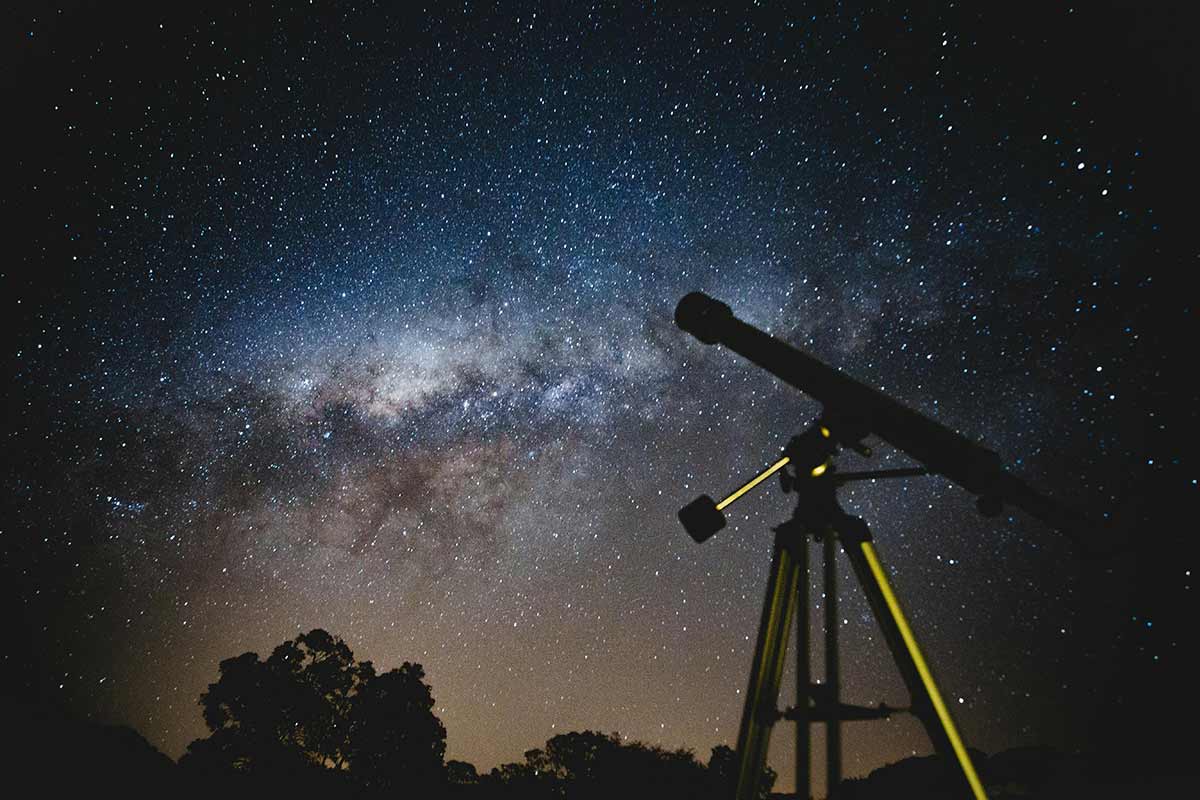
The James Webb telescope caused quite a stir when it was launched in 2021. More so when the first pictures from it were released to the public, causing major stargazing envy for us who don’t have access to something that spectacular. For all the astrophiles out there, wouldn’t it be great to get your hands on something similar? Here is our list of the best telescopes of 2025.
1. Celestron AstroMaster 102AZ
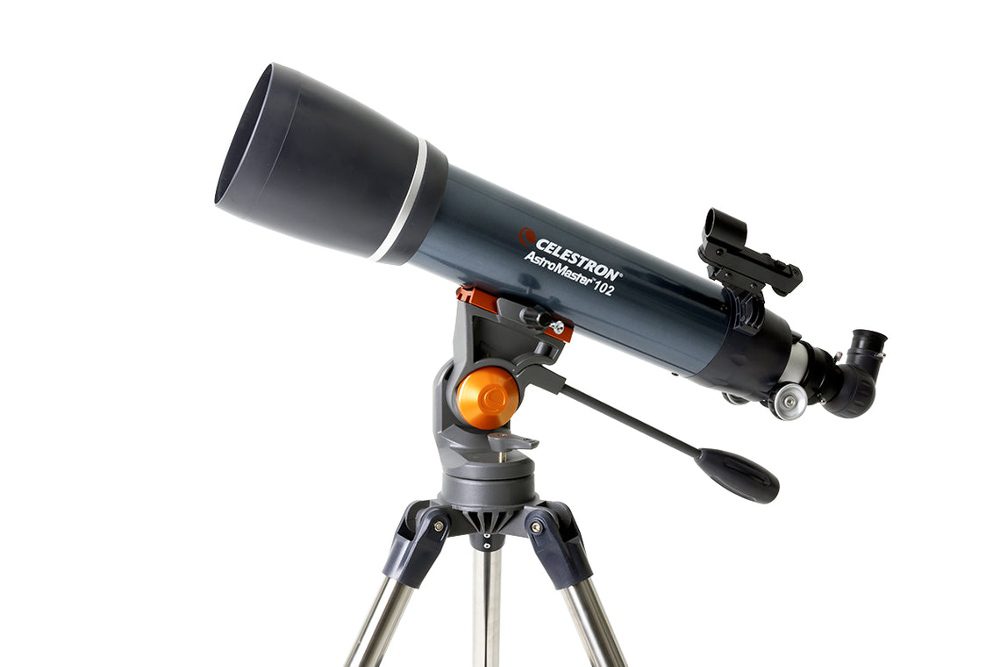
If you’re new to stargazing and planet viewing, the Celestron AstroMaster 102AZ is one of the best telescopes in 2025. Many experts recommend this telescope for beginner and experienced stargazers. It’s easy to set up because of the tripod and user-friendly controls.
Technical specs and inclusions:
- 102 mm primary mirror
- StarPointer red dot finderscope
- Two eyepieces
- Lightweight and sturdy frame
- Tripod
Price: $269.66
Buy it on Amazon here.
2. Sky-watcher Skymax 127

Sky-watcher is another popular name in the telescope biz. Astrophotographers can surely get a bang for their buck with this telescope because of the crisp images it produces. Even on the darkest nights, stargazers can definitely see planets and stars thanks to a coated corrector plate.
Technical specs and inclusions:
- Borosilicate primary mirror
- Vixen-style dovetail
- 2-in 28 mm eyepiece
- 90-degree star diagonal
- 6×30 finderscope
Price: $610
Buy it on Amazon here.
3. Vaonis Stellina

Although many stargazers swear by traditional telescopes, The Vaonis Stellina changed the game on its release. It’s an automatic telescope that takes photos of the sky for you. You can see beautiful views of deep-sky objects like galaxies and nebulae. Plus, you’ll even get a better glimpse of the moon.
Unlike most telescopes, the Stellina isn’t heavy. It’s so small and light you can pretty much bring it anywhere. However, it being an automatic telescope means you will have to pay a much higher price than its competitors. Still, it’s considered one of the best telescopes in 2025.
Technical Specs and inclusions:
- 5 hours of use
- Tripod
- 80 mm aperture
- 400 mm focal length
- 3096 x 2080 px images
Price: $1,409
Buy it on eBay here.
4. Celestron Starsense Explorer DX 130AZ

Here’s another Celestron that made this list. But what makes the Celestron Starsense Explore DX 130 AZ different from the AstroMaster AZ? You can connect the Starsense Explore to an app, and it tells you the locations of certain stars in space. Plus, you’ll know what stars and planets are in the sky, depending on where you’re pointing this telescope at.
The app is compatible with all iOS and Android devices.
Technical Specs and inclusions:
- 130 mm optical tube
- two eyepieces (25 mm and 10 mm Kellner eyepieces)
- Red dot finderscope
- Smartphone dock
- Tripod
Price: $354.05
Buy it on Amazon here.
5. Orion SpaceProbe II

If you want another beginner-friendly telescope, the Orion SpaceProbe II is one of your best options. It’s one of the most affordable telescopes, and kids and adults can use the SpaceProbe II to navigate the skies and watch stars and planets. You can even see a better view of the Moon, Saturn’s rings, and Jupiter’s moons!
Technical Specs and inclusions:
- 76 mm aperture
- Newtonian optical design
- Red-dot reflex sight
- MoonMap 260
Price: $99.99
Buy it on Amazon here.
And for other stories and news, read more here at Owner’s Mag!

Chess Robot Breaks Boy’s Finger While Competing in Tournament

10 Audience Research Tools to Help You Understand Your Market
10 Affiliate Tracking Software Tools to Grow Your Online Income

These Anti-MLM Communities Are Saving People from Scams

Scientists May Soon Predict Earthquakes with 80% Accuracy Two Days in Advance

Adam Neumann: Crashed WeWork, Got $350M from Silicon Valley

The Best Telescopes of 2025 for the BEST Viewing Experience
10 Affiliate Tracking Software Tools to Grow Your Online Income

Bit.ai Review for Businesses in 2025: Is It Still Worth It?

10 Audience Research Tools to Help You Understand Your Market

These Anti-MLM Communities Are Saving People from Scams

The Best Telescopes of 2025 for the BEST Viewing Experience

Adam Neumann: Crashed WeWork, Got $350M from Silicon Valley

Scientists May Soon Predict Earthquakes with 80% Accuracy Two Days in Advance
Trending
- Technology1 day ago
10 Affiliate Tracking Software Tools to Grow Your Online Income
- Technology1 day ago
10 Audience Research Tools to Help You Understand Your Market
- Lifestyle1 day ago
These Anti-MLM Communities Are Saving People from Scams
- Top Stories18 hours ago
Chess Robot Breaks Boy’s Finger While Competing in Tournament



